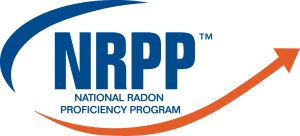
Radon Resistant New Construction Benefits
With Cardinalbama’s RRNC services, you’re investing in superior radon protection during the construction of your commercial property.
Our RRNC solutions offer superior protection and peace of mind with:
- Proactive radon mitigation systems
- Compliance with HUD and ANSI standards
- Cost-effective installation processes
- ASTM-compliant materials
- Future retrofit prevention
- End-to-end project management
Innovative Radon-Resistant Solution
Our RRNC services offer a comprehensive solution for new commercial construction, ensuring your building is well-protected against radon intrusion. Here’s how we bring radon-resistant innovation into your construction project:
- Tailored RRNC design integration
- Collaboration with construction teams
- Utilization of advanced materials and units
- Detailed assessment of construction plans
- Strategic system placement and installation
- Continuous monitoring options
- Regular site inspections and feedback
- Commitment to energy efficiency

Our Process
We meticulously follow these steps to ensure top-notch RRNC services: from understanding your needs to seamless implementation, each phase is designed for efficiency and compliance.
Consultation
We begin with a detailed consultation to assess project needs and radon resistance requirements.
Design & Plan
Our team creates a customized radon resistant design tailored to your construction goals.
Implementation
We execute the installation of radon barriers and venting systems during the construction phase.
Final Inspection
Conduct a thorough inspection to ensure all systems are compliant and effective.
Who We Serve
Our comprehensive commercial radon services are tailored to meet the unique needs of diverse industries, ensuring safety and compliance in every environment.
Property managers
We help properties including Apartment complexes, Medical facilities, Warehouse, Municipal buildings and more.
General contractors
Enhance property value and safety from the ground up on new construction properties for future occupants.
Multifamily
housing
Incorporate radon-resistant features in multi-family housing for future-proof health and safety of occupants.
Radon Resistant New Construction FAQs
Here are our most frequently asked questions about radon resistant construction. Feel free to reach out if you need additional information.
Our Unmatched Success in Radon Mitigation
With a steadfast commitment to safety and innovation, Cardinalbama sets the benchmark in radon mitigation through a track record of excellence and robust solutions that last.
Success Rate
We achieve radon levels below 4.0 pCi/L on every job, ensuring complete peace of mind for our clients.
Guaranteed Reduction
Our work guarantees radon levels below the action threshold, safeguarding health and compliance.
YEARS OF EXPERTISE
With over 30 years of professional experience, Cardinalbama is trusted for our expert radon mitigation services across the region.
Our Certifications
Cardinalbama is proudly certified by the industry’s leading organizations, reflecting our commitment to quality, safety, and professionalism. Our credentials ensure that we meet the highest standards for radon mitigation and testing services.





Resources About Radon Mitigation
Explore our collection of expert guides, articles, and resources designed to provide insightful information on radon mitigation and safety for commercial properties.
"*" indicates required fields
Learn About Our Radon Mitigation Services
Discover how our expert radon mitigation services can enhance the safety and value of your property. Our solutions are tailored to meet your specific needs.



